Introduction to Sedum and Pine Environments
Welcome to the world of Sedum, also known as stonecrops, where resilience meets beauty. Sedum plants are hailed for their ability to thrive in various conditions, often withstanding neglect where other plants might falter. Their plump, succulent leaves and star-shaped flowers form vibrant tapestries in gardens, beckoning onlookers with their low-maintenance charm. But the question on many gardeners’ minds is: will they prosper under the distinct canopy of pine trees?
Pine trees create a unique ecosystem beneath their towering boughs, one that’s marked by acidic soil, dappled sunlight, and a perpetual rain of pine needles. It’s a challenging environment, indeed, but some garden enthusiasts might recount stories of hardy sedums tucking themselves contentedly under the blanket of pine trees, adding a splash of life to the otherwise barren ground.
Imagine walking through a grove of pines and stumbling upon a patch of Autumn Joy Sedum with its rosy hues contrasting the deep greens and browns— it’s a testament to the adaptability of these rugged beauties. But is this a common sight, or simply a stroke of good fortune? Discover more about the adaptability of sedum plants.
Dive deeper into the care and varieties of sedum plants to gauge whether your garden might become the next success story. As we continue to explore the relationship between sedums and their would-be pine canopy homes, one thing’s for certain: nature has a knack for surprising us with its symbiotic ensembles.
Examining Soil Conditions: Can Sedum Cope?
Let’s delve into the world beneath the sweeping canopy of pine trees. The serene shade they provide comes with a peculiar soil chemistry – typically acidic and often associated with needle decay. This unique soil environment challenges many plant species, but what about our resilient friend, the sedum?
Sedums, with their versatile nature, are often the plant of choice for tough spots. But the pine tree’s acidic offerings raise the question: can these hardy succulents truly manage, or will they throw in the trowel? The soil acidity, for starters, can fail to resonate with a plant’s nutritional choir. Yet, sedums are no strangers to adversity, boasting an ensemble of species that can sway to the tune of various conditions.
When contemplating sedums under the towering pines, imagine a reality where adaptability meets the earth’s quirks. The key lies in the specific type of sedum. While some may balk at the thought of acidic soil, others churn the ground’s challenge into thriving growth. It’s akin to a crafty gardener who knows just what to plant in that peculiar, sun-dodging corner of the yard.
However, suppose your local sedum ensemble isn’t ready for the pine-soil stage. In that case, amendments can step into the spotlight. From limestone to compost, these adjustments are like tweaking the soil’s background music to a tune where sedum roots dance in delight. And voila! You orchestrate a harmonious living arrangement beneath the whispering pines.
For those eager to weave sedum into their pine-clad landscapes, exploring sedum varieties, and their unique growth tips is a melody worth listening to. With the right composition of species and a touch of soil savvy, your garden can host a captivating performance.
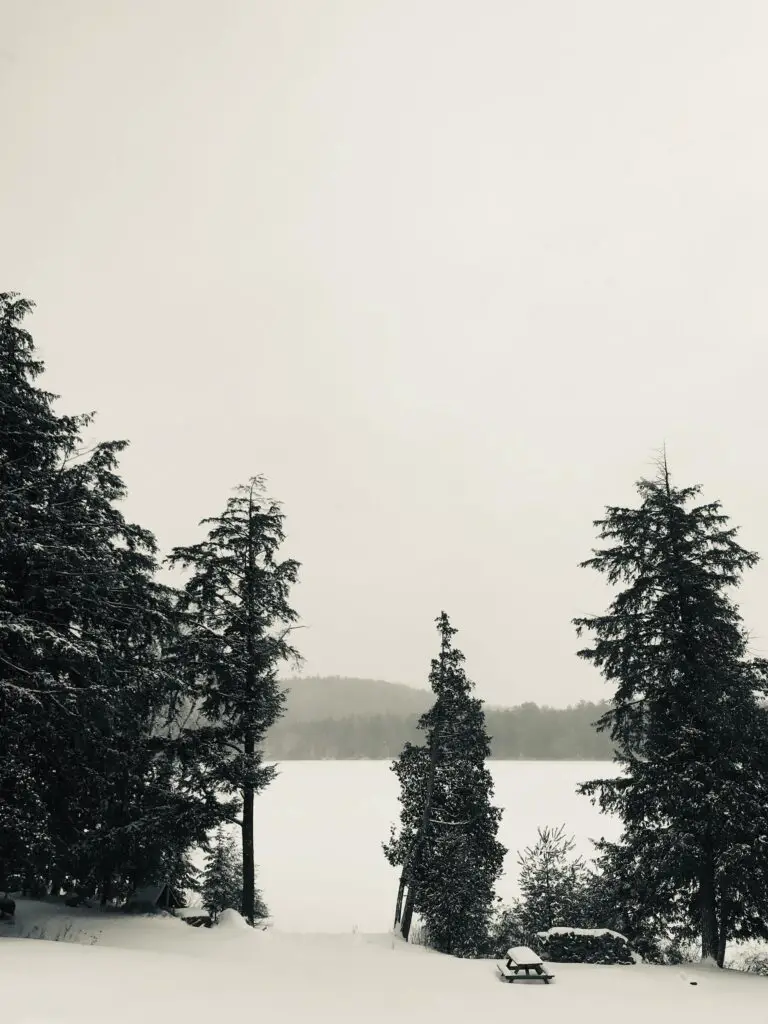
In summary, the sedum’s journey under the evergreens can be a remarkable tale of adaptation and growth. It’s a concerto of soil chemistry, botanical resilience, and human ingenuity, culminating in a landscape that sings with life, despite the stringent soil narrative dictated by pine trees. While no plant is truly one-size-fits-all, with a little effort, sedums can indeed find their rhythm in the most unexpected places.
Sunlight and Shade: Understanding Sedum’s Needs
Imagine a serene landscape with statuesque pine trees casting a mosaic of light and shadow on the ground below. Now, picture a vibrant cluster of sedum plants nestled in this dappled sanctuary, their succulent leaves basking in the gentle flickers of light. This idyllic scene poses the question: can sedum truly thrive under the canopy of pine trees?
Sedum, a hardy and versatile plant, boasts an impressive ability to adapt to various light conditions. But when it comes to life beneath the towering pines, sedums face a unique set of challenges. The key to their prosperity lies in the intricate dance between sunlight and the shade provided by these coniferous giants.
To understand the sedum’s needs, we should first dispel the myths that all sedum species are sun-loving desert dwellers or that all are shade-seeking woodland sprites. In reality, these resilient plants have more than a single preference, making them quite the botanical chameleons. Under pine trees, they encounter a particular kind of light—fluctuating and filtered.
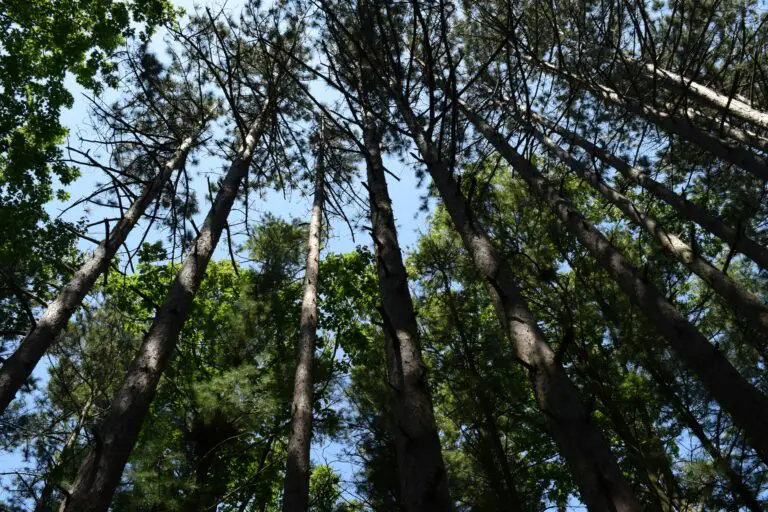
While pine trees do cast a considerable shadow, they also allow slivers of sunlight to pass through their needles, creating a condition known as ‘dappled light.’ This can be a haven for certain sedum varieties. Dappled light maintains a delicate equilibrium between the sun’s intensity and the coolness of shade, potentially fostering conditions for sedum to not just grow, but flourish.
When cultivating sedum in such environments, your mission is to observe the nuances of light throughout the day. You might be surprised to find that some areas under the pine canopy receive a generous amount of indirect sunlight, which could be just the right amount for your verdant friends. Sedums planted in these spots can stretch their roots contently, fully embracing the pine-scented ambiance.
Real-life examples across gardens and landscapes have shown that sedum’s adaptability is a testament to its success under pines. The sedum’s modest need for sunlight, coupled with its drought-tolerant qualities, make it a surprising but commendable companion for the pine. However, one must also consider the specific species of sedum and the conditions of the local climate to determine the full extent of compatibility.
Embracing the Pine Canopy: Sedum’s Dance with Light
So, whether you’re a gardening novice enchanted by the low-maintenance allure of sedum or a seasoned green thumb looking to add textural contrast to your pine-shaded enclave, remember that understanding and observing the light play is your key to unlocking the sedum’s potential. With the right approach and a bit of plant wisdom, your garden under the pines could transform into a living tapestry, celebrating the beautiful symbiosis between plant and tree.
Water and Drainage: Sedum’s Survival Strategy
When it comes to vibrancy and resilience, sedum plants are quite the contenders in the botanical world. But how do these hardy succulents fare when it comes to setting up camp beneath the towering presence of pine trees? Well, it’s all about their roots and the world they thrive in. You see, sedum plants boast a remarkable ability to store water in their fleshy leaves, allowing them to persevere through dry spells with ease. But they’re not fans of soggy feet! Good drainage is their mantra for survival.
Now, consider the environment under a pine tree’s canopy. These majestic conifers are notorious for their thick needle blanket that forms a dense mat on the ground, effectively reducing water evaporation. It sounds like a mini rainforest under there, doesn’t it? But here’s the twist: While it may be moist, pine needles also have a peculiar talent for acidifying the soil, which might not be every plant’s cup of tea, or rather, sip of water.
The plot thickens when we recognize that the constant shade cast by these verdant giants can lead to cooler soil temperatures – a sedum’s cue to slow down water uptake. Combine that with the potential for reduced water percolation due to the needle mat, and we’re looking at a precarious balancing act for water conservation and root health.
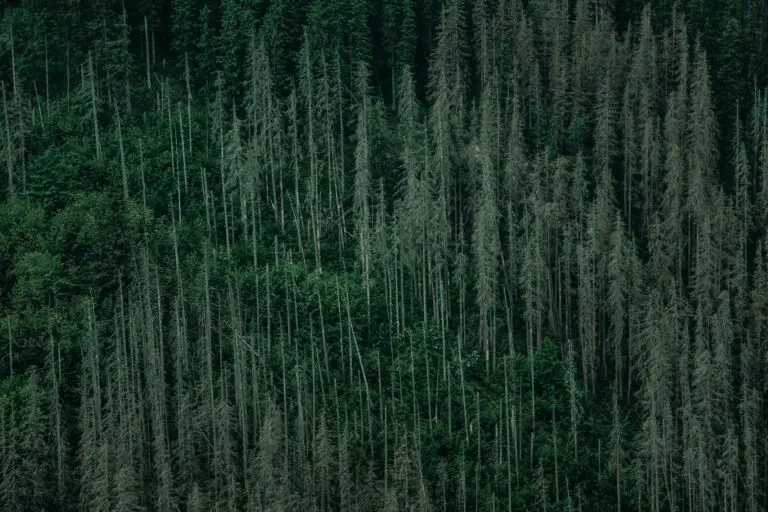
Imagine a scenario where a gardener has labored to disperse a troop of sedums under a pine grove. Initially, the sedums’ water-saving tactics could work wonders, allowing them to look plump and content. But as time marches on, if the drainage isn’t adequate due to compacted soil or the needle cover, those same sedums might start to throw in the towel. Their roots could become overly damp, leading to a case of root rot – an absolute party pooper for sedums.
But don’t hang your gardener’s hat just yet! This is where human ingenuity dances with nature. By amending the soil with grit or sand, one could defy the odds, ensuring that these low-maintenance troopers get just the right stage to showcase their drought-defying performance under the pines. Each succulent sage, with its own constellation of star-shaped flowers, thrives against the odds, telling a story of symbiosis and triumph against the backdrop of whispering pines. Isn’t gardening just poetic?
Pine Needle Mulch: Boon or Bane for Sedum?
Imagine strolling through a lush garden, the aroma of pine lingering in the air, as you admire a vibrant tapestry of sedum plants nestled under the towering silhouettes of pine trees. It’s a picturesque scene, but gardening enthusiasts often ponder a crucial question: can the delicate allure of sedum truly thrive in the unique environment created by pine needles?
Sedum, known for its hardiness and drought tolerance, might seem like it could conquer any terrain. But beneath the imposing canopies of pines, a battle is waged at the soil level. Pine needles, as they cascade to the earth and blanket the ground, begin a slow decomposition process, imparting their acids and forming a mulch that is both a blessing and a challenge to the soil ecosystem.
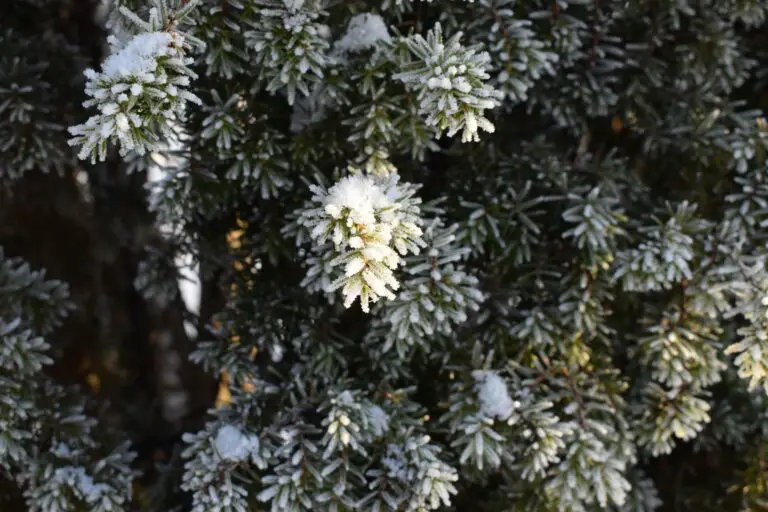
The acidity of this natural mulch often gives gardeners pause. Will it turn the soil too acidic for sedum to prosper? The truth, however, is nuanced. While fresh pine needles do possess a slightly acidic pH, as they break down, their acidity diminishes. In fact, the pine needle mulch can help conserve moisture and regulate soil temperature—a duo of benefits that sedum appreciates in its pursuit of growth, especially during the sweltering peaks of summer or the wintry whispers of frost.
But let’s unravel this further with a tangible example. Picture a local park, where beneath the pines, a spread of sedum presents itself in robust health, seemingly unfazed by the coniferous giants above. Why? Because, in this setup, the pine needle mulch acts as a natural weed barrier, lovingly cradling the sedum and deterring unwanted vegetative intruders.
Yet, for sedum to truly flourish, it needs more than just a cool and moist soil bed. Without proper balance, the abundance of pine needles might tip the scale towards excessive acidity over time. It requires a watchful eye and periodic soil testing to maintain that harmony, ensuring the sedum’s fibrous roots can absorb the essential nutrients from its earthen home.
So, will sedum grow under pine trees? It’s not merely a question of possibility, but one of understanding and balance. With mindful management of the pine needle’s role, sedum can indeed be a triumphant understory plant beneath pine’s majestic canopy, painting the landscape in a chorus of color and texture, much to the delight of any green-thumbed aficionado.
Choosing the Right Sedum Varieties for Pine Settings
Finding the perfect companions for pine trees in your garden isn’t just about aesthetics; it’s about understanding which plants peacefully coexist and thrive under the canopy of these evergreen sentinels. Enter Sedum, a versatile and hearty group of succulents that could be just the answer for those challenging spots beneath pine boughs.
Now, not all Sedums are created equal, especially when it comes to settling in the unique conditions pines create. The needles of pine trees tend to acidify the soil over time, and the dense canopy can result in rather dry, shady conditions underneath. But fear not, green-thumbed friends, for several sedum species are not merely tolerant but actually revel in such environments.
Take, for instance, the ever-popular ‘Autumn Joy’ with its robust nature and jubilant blooms that bring a dash of late-season color to a subdued palette. Or consider ‘Angelina’ sedum, whose needle-like, evergreen foliage can add a lovely contrast against the coarse pine needles. These varieties are not only accustomed to the drier soils but can also handle the acidic touch bestowed by their towering pine neighbors.
It’s crucial to note that while some sedum varieties prefer sunnier spots, there are those that have adapted to flourish in dappled light or partial shade. A prime example is Sedum spurium, also known as ‘Dragon’s Blood’, which spreads like a dream and presents a mesmerizing display of red-tinted leaves and starry flowers that mesh well in the understory of pines.
Moreover, real-life anecdotes from garden enthusiasts tell stories of ‘Cape Blanco’ and ‘Coral Carpet’ sedums, which have not only survived but thrived under the shade of pine trees, forming lush, low-growing mats that seem to sparkle with dew in the early morning light. The resilience and adaptability of these sedums make them ideal candidates for such specific growing conditions.
When planning your pine underplanting, always keep in mind that sedum not only offers a plush carpet-like cover but it’s also a trooper when it comes to minimal watering needs, making them ecologically sustainable choices. By selecting the right sedum species, your garden beneath the pines can transform from a barren shade to a thriving tapestry of succulent delight.
Planting and Maintenance: Tips for Thriving Sedum
Wondering whether the alluring sedum will play nicely with the stately pines in your garden? Let’s unearth the secrets to securing a green thumbs-up for these radiant succulents under the serene shade of pine trees. The key to a thriving sedum garden in the presence of pines is understanding the unique demands of both plant species. Embrace these savvy strategies, and you’ll witness a successful coexistence.
Prime the Pine-Surrounded Plot
Commence this green endeavor by prepping the pine’s periphery. Sedum seeks a spot that basks in the pine’s dappled daylight, steering clear of root competition. Space your sedum sprigs about six to eight inches apart, ensuring each one enjoys its personal growth sphere. Think of it as a succulent’s comfort zone for stretching its roots without vying for nutrients against the towering evergreens.
Water Wisely
Sedum prefers staying dry over a drenching, which works wonders under the thirst-quenching canopy of pines. Water your sedum sparingly, aiming for a schedule that keeps the soil slightly moist but never waterlogged. A pine’s umbrella tends to repel rainfall, so while you mitigate moisture, you’re also harmonizing the sedum’s preference for a bit of a dry stance.
Monitor Mulch and Acidity
Pines drop needles that naturally mulch the soil and sway its acidity. Sedum isn’t finicky, but it flourishes in neutral to slightly acidic soil. Every now and then, check the pH and add lime if the earth gets overly acidic. Mulch minimally, reserving room for sedum rosettes to rise and shine. Small pebbles or pine straw can dress up the space without suppressing the sedum’s spirit.
The Nutrient Nudge
A soft touch of fertilizer in the early spring can jump-start your sedum. Opt for a balanced blend that caters to slow and steady growth. The sedum’s resilience means it won’t need much; it’s like giving a power-packed pep talk rather than an all-out lecture.
A Close Watch on Competition
Pine trees are generous in sharing the spotlight but can be eager in their quest for nutrients. Keep an eye out for overzealous growth and gently guide your sedum should the pines seem to dominate. It’s a delicate dance of give and take where both the regal pine and the spirited sedum find their rhythm.
Leap at Local Success Stories
There’s no better muse than nature itself. Peek at local gardens where sedum and pines coexist harmoniously. Each can be a living lesson in the art of planting with pines. Chat with fellow green thumbs and gather real-life tips tailored to your terrain.
Picture the Perfection
To capture the imagination and illustrate the potential of your pine-framed sedum sanctuary, observe this image that exemplifies the serene balance achievable. Notice how the sedum snuggles comfortably under the gentle giant’s towering presence. It’s a snapshot of the symbiotic beauty your garden can mirror.
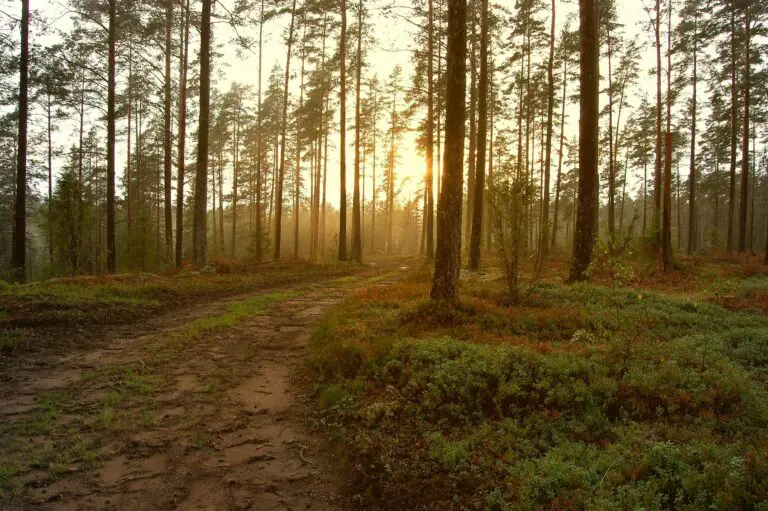
Armed with these insights, you’re well on your way to creating a sedum spectacle even amidst the grandeur of pine trees. Remember, with the right care and consideration, your garden can become a testament to the harmonious blending of diverse plant life.
Design Aesthetics: Integrating Sedum with Pines in Your Garden
When envisioning the tranquil harmony of a garden, few scenes are as picturesque as the lush green of sedum plants nestled at the foot of towering pines. But how does one achieve such an idyllic tableau within their own green space? Let’s explore the aesthetic nuances and complementary planting strategies to seamlessly blend the robust sedum with the stately elegance of pine trees in your landscape.
Creating a visual symphony, the soft carpet of sedum under the dramatic canopy of pine trees offers a contrasting texture that can be a feast for the eyes. The secret lies in choosing the right varieties of sedum that thrive in the acidic soil enriched by pine needles. Imagine the vibrant sedum groundcovers like Sedum ternatum or Sedum spurium, presenting a sea of foliage and starry flowers under the filtered sunlight provided by the needle-clad branches above.

Carrying the design beyond mere plant selection, thoughtful landscaping techniques come into play. Consider utilizing natural stone or rustic wood to create borders and pathways that complement the forest-like ambiance. These elements help to define the spaces within your garden while maintaining the organic ebb and flow between sedum and pines. Should the pine’s shade prove too dense, strategically pruning lower branches to allow dappled light can invigorate ground dwellers and heighten the aesthetic appeal.
Don’t linger in the realm of greens and browns alone; color is a potent ally in garden design. Companion plants such as heucheras with their vivid leaves or the fiery hues of autumn ferns can punctuate the green tapestry, drawing the eye and providing a year-round display of color contrast and interest.
Meticulous attention to these details not only augments the beauty of your garden but also promotes a healthy ecosystem where sedum and pine trees coexist in balance. The layered approach, carefully considering the gradations of light, soil compatibility, and complementary hues, is key to achieving a picturesque vignette reminiscent of natural woodlands.
Through the amalgamation of compatible planting and artful landscaping, you can curate a serene alcove that showcases the diversity and resilience of nature. Sedum, with its low-maintenance allure, proves to be the ideal underplanting for the majestic backdrop provided by pine trees. The transformation of this symbiotic relationship into a captivating garden design awaits your creative touch.
Frequently Asked Questions
Are you considering the tough-as-nails sedum for your garden nook beneath the lofty pines? Allow us to dive into the heart of the matter, answering those burning questions about cultivating sedum in the dappled shade of pine trees.
Can Sedum Survive the Acidic Soil Often Found Under Pine Trees?
Ever walked through a pine forest and noticed the carpet of needles beneath your feet? It’s commonly thought that these needles would turn the soil highly acidic – a potential concern for gardeners. However, sedum, known for its robust character, brushes off this worry with ease. Many varieties of sedum actually embrace a pH challenge and can adapt to less-than-ideal soil conditions with a bit of lime to neutralize excess acidity.
Will the Shade from Pine Trees Affect Sedum Growth?
Sedum plants crave the sun like a cat seeks out that sunny spot on the window sill. But, similar to our feline friends, they can handle a bit of shade. Under pine canopies, the diffused light may just be enough for sedum plants to flourish. Imagine them soaking up the speckled sunlight filtering through the pine needles. The secret is selecting the right type, as some sedum varieties can tolerate lower light levels better than others.
How Does Pine Needle Drop Impact Sedum Plants?
Contrary to the popular myth, a blanket of pine needles won’t spell disaster for your sedum. In reality, it acts as a natural mulch, conserving moisture and providing protection against the cold. Plus, as they decompose, pine needles can contribute to a well-drained environment that sedum plants absolutely love.
Can the Competition for Water Be a Problem for Sedum Under Pines?
Tall tales of thirsty pines hogging all the water aren’t entirely accurate. Sedum plants aren’t water guzzlers; they’re drought-resistant champions. With their succulent leaves storing precious H2O, these plants stand their ground in the tussle for hydration, even with the absorbent roots of pine trees nearby.
Watch this informative clip that takes you on a verdant journey, exploring the relationship between sedum plants and their towering pine neighbors:
In the world of gardening, it’s often about the perfect match – and in the case of sedum under pine trees, with a little understanding and the right care, it appears to be a budding relationship.


